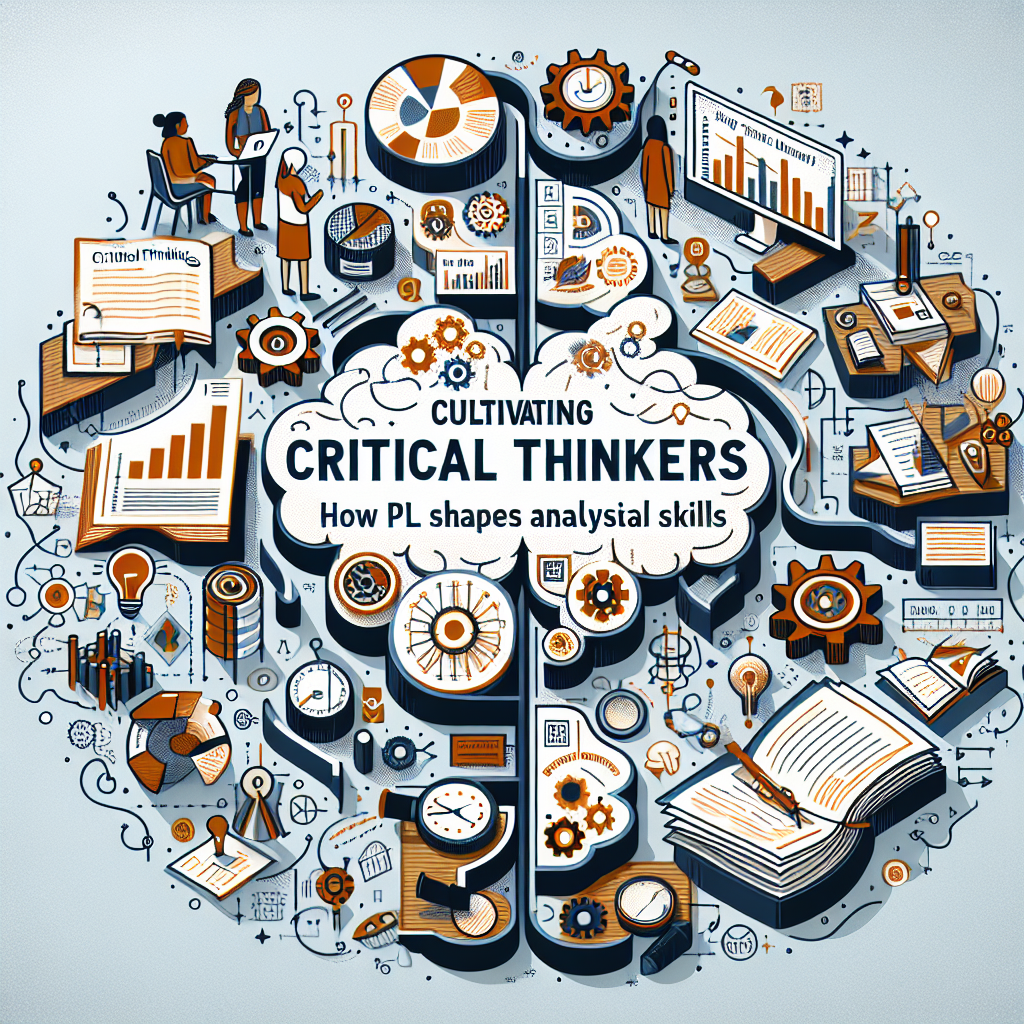
Introduction
In a world that thrives on innovation and creativity, the need for cultivating critical thinkers has never been more essential. The evolution of the job market and the rapid pace of technological advancements demand that individuals possess strong analytical skills. One highly effective framework that educators and institutions are adopting is Project-Based Learning (PBL). By immersing students in real-world problems and collaborative projects, PBL cultivates critical thinkers. This article explores how PBL shapes analytical skills, presenting unique insights and practical applications that can transform educational practices.
The Foundation of PBL: Understanding Its Roots
What is Project-Based Learning?
Project-Based Learning is an instructional methodology that encourages students to learn by engaging with complex questions or problems over an extended period. Unlike traditional learning, where knowledge is often transferred in a one-way manner, PBL fosters a more interactive and dynamic learning environment.
Key Characteristics of PBL:
- Real-World Connection: Projects are based on real-world challenges that are relevant to students’ lives.
- Active Learning: Students take charge of their learning through collaboration and self-directed inquiry.
- Higher-Order Thinking: PBL encourages critical thinking, problem-solving, and the application of knowledge.
The Importance of Cultivating Critical Thinkers
In the landscape of education, cultivating critical thinkers has far-reaching implications. These individuals are equipped to assess information critically, make informed decisions, and tackle complex problems. In a society overflowing with information, the ability to discern facts from misinformation is invaluable.
Skills Developed Through PBL
- Analytical Skills: PBL fosters the ability to analyze data, identify patterns, and form evidence-based conclusions.
- Creativity: Working on projects promotes innovative thinking and encourages students to explore different solutions.
- Collaboration: By working in teams, students learn to communicate effectively and respect diverse perspectives.
How PBL Shapes Analytical Skills
Engaging with Real Problems: A Case Study
One notable example of PBL’s impact on cultivating critical thinkers can be seen in a high school environmental science project. Students were tasked with addressing the issue of plastic waste in their community.
Analysis:
- Research: Students conducted surveys, interviewed local business owners, and accessed environmental data to understand the severity of the issue.
- Solutions Development: They brainstormed potential solutions, ranging from awareness campaigns to eco-friendly product alternatives.
- Implementation & Reflection: After presenting their findings to the community, students reflected on the results and impact of their actions.
This case study exemplifies how PBL promotes analytical skills through inquiry, problem-solving, and reflective thinking.
The Role of Collaboration in Skill Development
Collaboration is a crucial component of PBL. Working in diverse teams allows students to confront differing viewpoints, enhancing their ability to analyze information critically.
A Real-World Example
A renowned educational institution implemented a PBL initiative on urban planning. Students collaborated to redesign a local park, analyzing housing data and community feedback.
Analysis:
- Diverse Perspectives: Each student brought unique insights, facilitating deeper analysis and richer outcomes.
- Critical Evaluation: By debating different design options, students honed their ability to evaluate ideas critically.
Using Technology to Enhance PBL Experiences
Incorporating technology into PBL further enhances students’ analytical skills. Digital tools can facilitate research, data analysis, and project presentation, allowing for a broader exploration of topics.
Case Study: A Tech-Driven Approach
A middle school implemented a PBL module on renewable energy. Students utilized simulations and online modeling tools to understand energy consumption and design solar-powered devices.
Analysis:
- Enhanced Data Analysis: Tools allowed students to visualize data, leading to better understanding and analysis of energy efficiency.
- Presentation Skills: Students learned to present their findings through digital platforms, enhancing their communication and analytical presentation skills.
The Transformative Power of PBL in Education
Creating an Inquiry-Based Culture
Educators play a pivotal role in cultivating an environment conducive to inquiry. PBL challenges traditional teaching methods and empowers students to take charge of their learning journey.
Insights for Educators:
- Create projects that motivate students to ask questions and pursue answers.
- Foster an atmosphere of curiosity where mistakes are viewed as valuable learning opportunities.
- Encourage reflection as part of the learning process, reinforcing analytical skills.
Assessing Skills in a PBL Framework
Evaluating students’ analytical skills through PBL requires a different approach than traditional assessments.
Suggested Assessment Strategies:
- Portfolios: Students compile their project work, providing a comprehensive view of their analytical journey.
- Peer Reviews: Collaborative feedback allows students to reflect on their analytical processes.
- Presentations: Students articulate their findings and the rationale behind their decisions.
Conclusion: Empowering the Next Generation of Thinkers
Cultivating critical thinkers through Project-Based Learning shapes not only students’ analytical skills but also their ability to navigate a complex world. PBL invites students to engage actively with real-world challenges, promoting inquiry, collaboration, and reflective thinking. As educators, it’s essential to harness the potential of PBL to prepare students for future challenges.
Motivational Takeaway
Embracing PBL isn’t just an educational trend; it’s a transformative approach to learning that equips students with essential skills for life. Let us commit to fostering a generation of critical thinkers who can tackle tomorrow’s challenges with innovative solutions.
Frequently Asked Questions (FAQs)
1. What is Project-Based Learning (PBL)?
PBL is an instructional methodology where students learn by engaging with real-world problems through collaborative projects over an extended period.
2. How does PBL cultivate critical thinking skills?
PBL fosters critical thinking by encouraging students to analyze information, collaborate with peers, and develop solutions to complex problems.
3. Can PBL be implemented in any subject area?
Yes, PBL can be adapted to fit various subject areas, from science and mathematics to social studies and the arts, making it versatile and applicable across the curriculum.
4. How can teachers assess student learning in PBL?
Assessment can be done through portfolios, peer reviews, and presentation of projects, allowing educators to gauge students’ analytical processes and critical thinking skills.
5. What resources are available for implementing PBL in the classroom?
Numerous online resources, including PBL project databases, instructional guides, and professional development courses, are available for teachers interested in integrating PBL into their classrooms.
By understanding and applying the principles of Project-Based Learning, we can effectively cultivate critical thinkers equipped with the analytical skills necessary for success in an ever-evolving world. Stay informed, engage deeply, and remember: the journey of learning is most rewarding when it’s shared.














